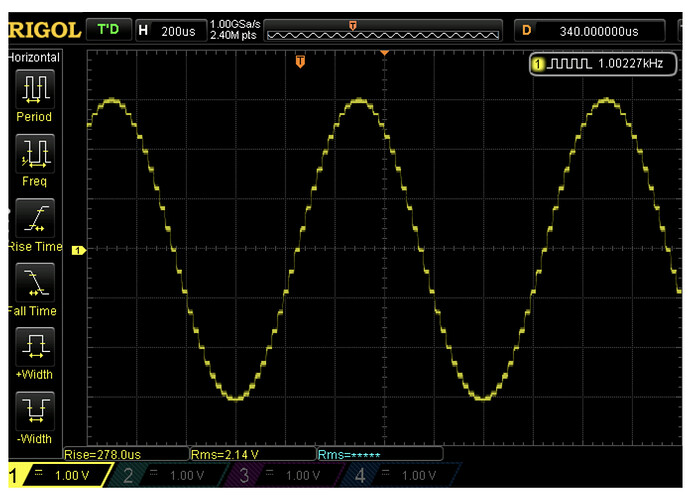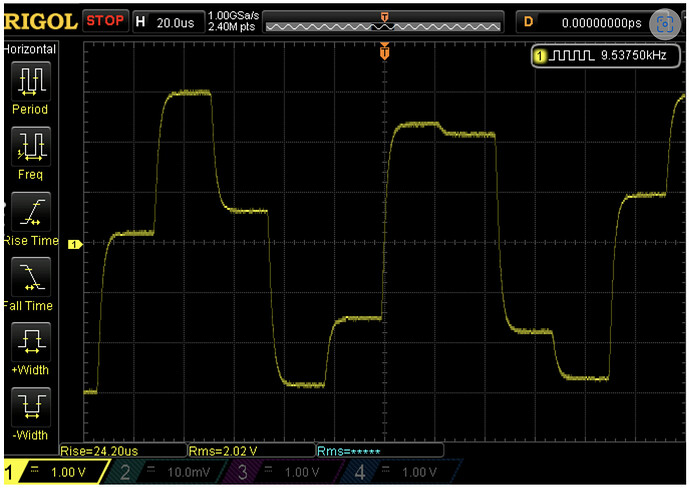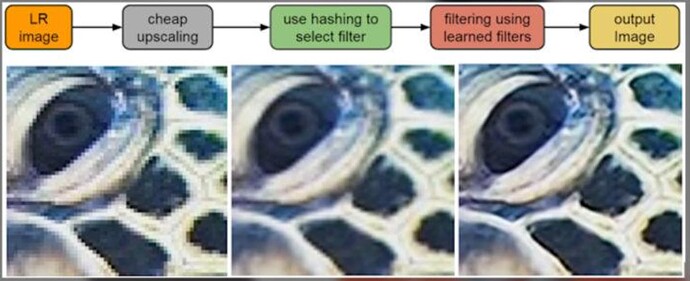Claim 3:
- in reality, there is no audiable difference between DAC’s own upsampling vs external upsampling as there is no measurable difference in their output for the same source
- if there is any audible difference, it must be a poorly designed filter causing it
My view:
Pseudo science here again. It is similar to claim 2 as you just assume your sceintific objective measurements capture all audiable measurements.
Claim 4:
But the video of this expert tell me that I don’t need anything more than 44.1k / 16 bit? Are you sure upsampling help?
My view:
My comment is don’t trust expert. I am an expert in my own area but I think I am not 100% right all the time. Expert is like you and me. It just happens that he may have a bit more experiece in his area. Period. Don’t ever think he has a speical super brain.
Back to the video, it is indeed very interesting but mis-leadling in certain areas. He said feeding a 44.1k / 16bit stair step digital sine wave into even an very old DAC would give you perfectly smooth since wave…
He does show it with his equipments. It looks objective, scientific, not arguable, correct? The stair step digital sine wave does show up as perfect smooth sine wave in the DAC’s output.
Pseudo science here again! You got tricked because he is using a oversampling (OS) DAC. Looks to me he ether doesn’t know himself or he did it on purpose to support his other claim.
Let’s look at the following audio signal output from a real DAC on a oscilloscope.
output for a 1k sine wave:
output for a 10k sine wave:
These are real output from Topping E30. More info here.
Bottom line, don’t trust any expert. You need to think independently otherwise you will be manipulated by these experts.
==== Updated on 22 April 2024 ====
Upsampling helps to reconstruct final better audio signal from a DAC
-
Modern DAC is, in general, doing a very good job especially with internal up sampling. However, it is still far from perfect in final audio signal reconstruction. There are still areas to improve, e.g. using external upsampling processing instead of internal upsampling process (as more advanced processings are availble for resource-rich computer than a chip based solution.
-
Up sampling does help to reconstruct better audio signal (as it is demonstrated by the modern DACs). Just to name a few benefits, it improves anti-aliasing performance, and reduces jitter.
Over sampling (aka Hi Res music) helps to reconstruct final better audio signal from a DAC
-
Over sampling does help to reconstruct better audio signal as it improves anti-aliasing performance, increase resolution, and reduce noise.
-
In terms of sampling frequency, "Hi-Res" music (anything higher than 44k) is an example of over sampling (as in theory , only 44kHz is required). It happens during the ADC process. From point 3 above, it would help to regenerate better audio signal, hence, better music.
-
In terms of bit depth, "Hi-Res" music use more than 16 bit. It helps to reduce quantization error. it would help to regenerate better audio signal, hence, better music.
-
The purpose for using “Hi-Res” input is not for its ability to reconstruct signal outside the audible range . It is just a by-product. Yes, based on sampling theory, we can use 768k sampling to reconstruct signal with frequencies up to 384k but again, this is not what we needed .
-
Hi-Res industry used the by-product I mentioned in point 6 above as a marketing material when they initially pushed for SACD. It caused people who knows about the audible frequency range to consider Hi-Res music as snake oil (but it is not snake oil for other reasons stated above)
Reasoning for audible / inaudible difference
-
I believe we have many scientific, objective, peer-reviewed papers to show that "there is no evidence to prove there is audible difference between 44.1 and HiRes " (statement 1).
-
However, using the objective findings (statement 1) to prove that there is objective measurements / research / experiments to show that "there is no audible difference from HiRes / Oversampling / etc… " (statement 2) is 100% wrong
-
Using this unjustified reasoning (e.g. “statement 1 implies statement 2” above) to claim anything is very dangerous. Basically, people can easily claim anything they want with this wrong reasoning. For me, I knew about this even before I learnt it offically from my “philosophy 101” in college. I was wondering why they teach such basic things in a college-level course… it is clear now.
-
Any re-packaging of the “proof” from using the unjustified reasoning (aka wrong reasoning) from item 10 and called the proof is "scientific ", to my understanding based on my previous professional training, is called Pseudo-science.
-
We may see claim that is something like “Based on objective measurements (see point 10 above ), you cannot hear any audible difference with HiRes. If you do, either your brain is fooling you or a poorly desinged reconstruction filter causing it” (statement 3). Based on my training, these claims are classifed as "unfalsifiable claim " under the category of Pseudo-science. i.e. there is no way for anyone to prove the statement 3 is wrong under any situation.
=================
What does HQPlayer give you?
Modern DACs (e.g. ESS / AKM / CS / BB based DAC) do use oversampling internally before they feed the music to it’s internal Delta/Sigma modulation).
HQPlayer can help you to offload this oversampling process to a much more powerful PC. It can use more advanced filter/noise shaper/modulation to help your DAC in regnerating the analog music.
With a photo enhancement analogy, it ls kind of like the following:
You can consider the one on the left is done by “NOS” (i.e. Non-Over Sampling) DAC
the middle one is like modern DACs (using their own internal oversampling)
the last one is like using HQPlayer for doing upsampling.
They are all from the same source (e.g. 44.1k / 16 bit). The output are just different presentation of the same source.
I really like analogy… to me, it helps to explain to other people.
Let’s think about cooking analogy,
the source (44.1k/16 bit) is the recipes
the DAC is the chef
the final music output is the dish
The master lab give you the recipes for a dish. Your hifi system “cook” it for you.
I would not say my music is better or worse than the one from the master lab as they are not comparable .
I won’t compare a recipes with a final dish as I won’t compare apple to orange.
ok, go back to the pictures above, let’s use cooking analogy:
For the first picture, it’s the final dish from restaruant NOS
For the second picture, it’s the final dish from restaruant DAC(chip-based OS)
For the third picture, it’s the final dish from restaruant UPSAMPLING
Again, let me remind you. They are all using the same recipes .
It’s always a personal preference in selecting the resturatnt.
You can pick a “bit perfect” restaurant NOS or
You can pick a “convience” restaurant DAC(chip-based OS) or
You can pick a “5-star” restaurant UPSAMPLING
It is always your call
![]()



